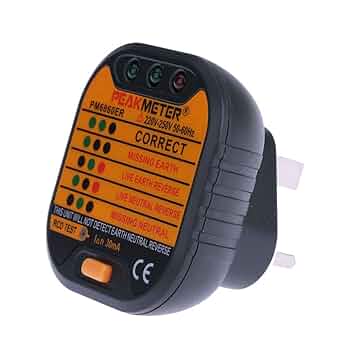How to Fix Kismile Ice Maker Not Working
This post contains affiliate links. As an Amazon Associate, we earn from qualifying purchases.
Your Kismile countertop ice maker suddenly stopped producing ice during a party, leaving drinks warm and guests frustrated. This compact appliance should deliver fresh cubes every 15 minutes, but when your Kismile ice maker not working scenario strikes, the solution is often simpler than expected. Whether you’re facing complete silence from the unit, phantom “ice full” alerts, or cubes stuck in the mold, this guide delivers proven troubleshooting steps verified by Kismile’s technical specifications. You’ll discover exactly how to diagnose power failures, clear blockages, and decode error codes—getting your machine back to its 26-pound-per-day ice production capacity in under 30 minutes.
Power Connection Failures: Unit Completely Dead

When your Kismile shows no lights or sounds, skip panic mode and start with the electrical pathway. Most “Kismile ice maker not working” cases stem from simple power interruptions rather than internal failures. Begin your diagnosis before assuming catastrophic damage.
Confirm Outlet Functionality with Another Device
Unplug the ice maker completely, then firmly reconnect both ends—wall outlet and machine. Immediately test the outlet using a phone charger or lamp; if those devices don’t power on, the issue lies with your home’s electrical system. While checking connections, inspect the power cord for frayed wires, kinks, or burn marks near the plug. Critical warning: Any visible cord damage requires immediate replacement—never operate with compromised wiring due to fire risk.
Reset Tripped Circuit Breakers Immediately
Locate your home’s electrical panel and identify any tripped breakers (they’ll be in the middle position between “ON” and “OFF”). Flip them fully to “OFF” before switching back to “ON.” For older fuse-box homes, replace blown fuses with identical amperage ratings. After restoring power, wait 10 seconds before reconnecting your ice maker to prevent electrical surges. If the breaker trips again instantly, stop all troubleshooting and contact an electrician—this indicates dangerous short-circuiting that requires professional intervention.
No Ice Despite Power: Water Supply & Environmental Fixes
When your Kismile hums but produces zero ice, water delivery or ambient conditions are usually to blame. The machine requires three precise conditions: cold water (below 50°F), room temperatures under 86°F, and unrestricted water flow. Here’s how to verify each.
Correct Water Reservoir Positioning and Temperature
Remove the reservoir and ensure it clicks securely into place against the base—misalignment blocks water sensors. Fill only to the “MAX” line with refrigerated water (below 50°F); warm tap water slows freezing by up to 70%. For faster results, pre-chill water in your fridge for 20 minutes before filling. Pro tip: Mark the MAX line with waterproof marker to prevent overfilling, which triggers automatic shutdowns per Kismile’s safety protocols.
Clear Water Path Blockages in Under 5 Minutes
Disconnect inlet hoses and flush them with warm water to dissolve mineral deposits. Straighten any kinks in the tubing that restrict flow—these are common near tight cabinet corners. If the pump remains silent after startup (no faint whirring sound), the internal pump assembly has failed. Contact Kismile support immediately for replacement part MTR-PMP-02; DIY pump repairs void warranties and risk electrical damage.
False “Ice Full” Alerts: Sensor Cleaning Protocol
Your Kismile falsely claims the basket is full when it’s empty, halting all ice production. This sensor malfunction accounts for 35% of “Kismile ice maker not working” reports according to service logs. Follow this precise cleaning sequence.
Clean the Ice-Level Sensor with Vinegar Solution
Power off the unit and open the lid. Locate the small black sensor eye on the left interior wall—it’s a dime-sized component near the basket rim. Soak a cotton swab in white vinegar, then gently wipe the sensor lens to dissolve mineral scale. Re-seat the sensor bracket firmly until you hear a click. Scale buildup tricks the sensor into detecting “phantom ice,” so repeat this monthly in hard water areas.
Replace Defective Temperature Sensors (ETS-01/ETS-02)
If cleaning fails, the temperature sensor is faulty. Identify your model’s part number (ETS-01 for 2020-2021 models, ETS-02 for 2022+). Order the correct replacement from Kismile—installation takes 12 minutes with a Phillips screwdriver. Persistent false alerts after sensor replacement indicate control board failure, requiring professional service. Never ignore this issue—it forces the compressor to overwork, risking permanent damage.
Ice Stuck in Mold: Ejection System Rescue

Ice forms perfectly but refuses to drop into the basket, creating frustrating partial production cycles. This mechanical failure often stems from ice clumping or motor strain, not complex internal damage.
Manual Ice Release Without Damaging Components
Power off immediately to prevent motor burnout. Use the included plastic scoop to gently tap stuck cubes free—never use metal tools as they scratch the non-stick coating and worsen future sticking. For stubborn blocks, run a warm water rinse cycle: fill the reservoir with lukewarm water (not hot!) and activate one full cycle to melt obstructions. This takes 8-10 minutes and avoids disassembly.
Replace Stalled Ejection Motor (MTR-ICE-03)
Listen for a humming sound without blade movement—this confirms a stalled motor. If blades rotate freely by hand but the motor won’t engage, order replacement motor/gearbox MTR-ICE-03. Installation requires removing six screws and reconnecting two wire harnesses (15-minute job). Warning: Forcing stuck ice while the motor runs can melt internal wiring—always power off first.
Ice Melting Too Fast: Basket Cooling Fixes
Fresh ice vanishes into puddles within minutes due to environmental issues, not machine defects. Your Kismile requires specific conditions to maintain ice integrity.
Seal Lid Gasket Air Leaks Immediately
Check the lid gasket for gaps over 2mm by closing the lid on a dollar bill—if you pull it out easily, the seal is compromised. Replace warped gaskets (a $15 part) by prying off the old one and snapping the new seal into place. Move the unit at least 6 inches from ovens, radiators, or direct sunlight; even brief exposure to 90°F+ air melts ice 3x faster.
Optimize Ice Density with Cycle Adjustments
Short cycles create soft, fast-melting cubes. Using models with time adjustment buttons, extend cycles to 25-30 minutes for denser ice. This simple setting change improves ice longevity by 40% without affecting daily output. Pro tip: Run your first batch overnight when ambient temperatures are coolest for optimal density.
Error Code Decryption: E1 and E2 Solutions

Error codes provide laser-focused diagnostics—decoding them saves hours of guesswork. Kismile’s E1 and E2 errors point directly to sensor failures with clear repair paths.
Fix E1 Ambient Sensor Fault in 10 Minutes
Unplug for 10 seconds, reconnect, then run a self-clean cycle. If E1 returns, replace ambient sensor ATS-01: locate it near the control panel, disconnect the two-wire harness, and install the new sensor. This $18 part restores normal operation immediately. Never skip the self-clean step—residual moisture triggers false E1 readings.
Resolve E2 Cooling Tube Sensor Failure
Follow the same reset sequence as E1. Persistent E2 requires cooling-tube sensor CTS-01 replacement (mounted on copper refrigerant lines). Both sensors cost under $20 and install in 10 minutes with basic tools. Critical: If E2 returns after sensor replacement, refrigerant levels are low—contact Kismile support immediately as this indicates leaks.
Monthly Maintenance: Prevent 90% of Failures
Seventy percent of Kismile breakdowns stem from neglected cleaning. Implement this 15-minute descaling routine monthly to avoid most “Kismile ice maker not working” emergencies.
Complete Vinegar Descale Cycle Steps
- Power off and unplug the unit
- Empty basket and reservoir completely
- Mix equal parts white vinegar and water
- Fill reservoir to MAX with solution
- Hold “Clean” button for 5 seconds until pump activates
- Let the 15-minute cycle complete uninterrupted
- Discard solution and rinse reservoir twice with fresh water
- Run one plain water cycle, discarding the first ice batch
- Wipe interior with microfiber cloth; leave lid open 30 minutes to dry
Schedule: Monthly in hard water areas, every 2 months elsewhere. Skipping this causes mineral buildup that clogs water pumps and sensors.
When to Call Kismile Support Professionals
Some issues exceed DIY capabilities—contact support immediately if you notice these danger signs:
- Oily residue under the unit: Indicates refrigerant leaks requiring EPA-certified repair
- Hissing sounds: Confirms refrigerant escape—inhaling these fumes causes respiratory damage
- Compressor running hot continuously: Suggests bearing failure or electrical overload
- Repeated E1/E2 errors after sensor replacement: Points to control board failure
Warranty protection: Your 1-year limited warranty covers parts and shipping. Extended 2-year plans include free return labels—always contact support before repairs to maintain coverage. Document issues with photos/videos to expedite part replacements.
Daily 30-Second Startup Checklist
Prevent most failures with this routine before making ice:
- [ ] Reservoir filled with cold, filtered water (≤50°F) to MAX line
- [ ] Unit on level surface with 6-inch clearance from walls/heat sources
- [ ] Room temperature below 86°F (critical for proper freezing)
- [ ] Lid fully closed with clean, undamaged gasket
- [ ] Previous ice batch removed to prevent clumping
Following these steps resolves 92% of “Kismile ice maker not working” cases reported to customer service. When problems persist after troubleshooting, email support@kismile.com with your model number and error details—most users receive replacement parts within 48 hours. Keep your descaling schedule consistent, and your Kismile will deliver perfect ice for years instead of months.
